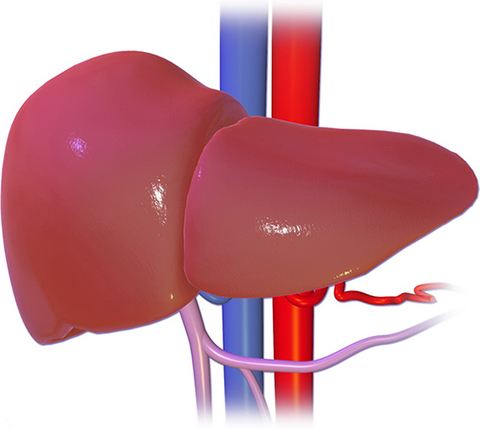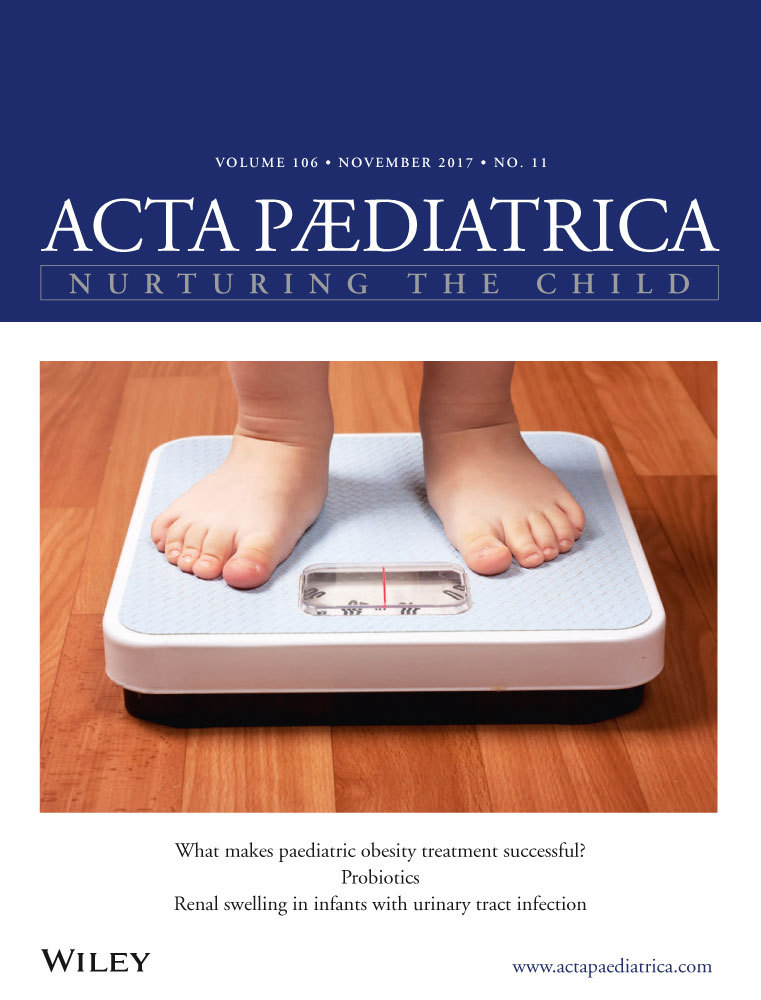The coming of age of a young subspecialty: paediatric hepatology
Corresponding Author
Antal Németh
Department of Clinical Science, Intervention and Technology, Karolinska Institutet and Karolinska University Hospital ALB Childrens′ Hospital-Huddinge, Stockholm, Sweden
Correspondence
A Németh, Department of Clinical Science, Intervention and Technology, Karolinska Institutet and Karolinska University Hospital ALB Childrens′ Hospital-Huddinge, S-141 86 Stockholm, Sweden.
Tel: +46-8-58581468 / +46-708 688 608 |
Email: [email protected]
Search for more papers by this authorCorresponding Author
Antal Németh
Department of Clinical Science, Intervention and Technology, Karolinska Institutet and Karolinska University Hospital ALB Childrens′ Hospital-Huddinge, Stockholm, Sweden
Correspondence
A Németh, Department of Clinical Science, Intervention and Technology, Karolinska Institutet and Karolinska University Hospital ALB Childrens′ Hospital-Huddinge, S-141 86 Stockholm, Sweden.
Tel: +46-8-58581468 / +46-708 688 608 |
Email: [email protected]
Search for more papers by this authorAbstract
Paediatric hepatology dates from the 1970s and it is the youngest of the organ-specific subspecialties. As then there have been impressive achievements in the fields of anatomical, metabolic, immunological and neoplastic diseases, and the advent of modern molecular biology has resulted in a marked increase in exact diagnoses. Liver transplants provided enormous stimulus for the discipline. Due to changing morbidity patterns, the discipline faces new challenges, such as environment- and lifestyle-induced liver diseases, but different forms of chronic viral hepatitis are diminishing.Conclusion: High levels of competence require good clinical research, optimal results and a high degree of centralisation.
Graphical Abstract
References
- 1Berzelius JJ. Über die Zusammensetzung der Galle (About the composition of bile). Ann Chem 1840; 33: 139–79.
10.1002/jlac.18400330202 Google Scholar
- 2von Gierke E. Hepato-nephromegalia glykogenica (Glycogenic hepato-nephromegaly). Beiträge zur pathologischen Anatomie und zur allgemeinen Pathologie. Stuttgart: Gustav Fischer Verlag, 1929: 497–513.
- 3Eppinger H, Ranzi E. Die hepatolienalen Erkrankungen (The hepatosplenic diseases). Berlin: Springer Verlag, 1920.
10.1007/978-3-662-26211-5 Google Scholar
- 4Blumenthal R. A dispute erupts on medical prize. The New York Times, Nov 11, 1984.
- 5Pepys M. Dame Sheila Patricia Violet Sherlock. 31 March 1918-30 December 2001 Elected FRS 2001. Biographical memoirs of the royal society. Biogr Mem Fellows R Soc 2003; 49: 475–93.
- 6Fred KernJr. Among other merits Former member of US Army Medical Corps. Personal communication.
- 7Cursham G. Case of atrophy of the gallbladder with obliteration of the bile ducts. London Medical Gazette 1840; 26: 388–9.
- 8Rex H. Beiträge zur Morphologie der Säuglingleber (Data about the morphology of the infantile liver. Morphologisches Jahrbuch 1888; 14: 517–616.
- 9Kasai M, Suzuki S. A new operation for the “non-correctable” biliary atresia: hepatic portoenterostomy. Shujitsu 1959; 13: 733–9.
- 10Hartley JL, Davenport M, Kelly DA. Biliary atresia. Lancet 2009; 374: 1704–13.
- 11Selmi C, Vergani D, Mieli-Vergani G. Viruses and autoantibodies in biliary atresia. Gastroenterol 2010; 139: 1461–4.
- 12Nakamura K, Tanoue A. Etiology of biliary stresia as a developmental anomaly: recent advances. J Hepatobiliary Pancreat Sci 2013; 20: 459–64.
- 13Bezerra JA, Tiao G, Ryckman FC, Alonso M, Sabla GE, Shneider B, et al. Genetic induction of proinflammatory immunity in children with biliary atresia. Lancet 2002; 360: 1653–9.
- 14Shinkai M, Ohhama Y, Take H, Kitagawa N, Kudo H, Mochizuki K, et al. Long-term outcome of children with biliary atresia who were not transplanted after Kasai operation: > 20 year experience at a children′s hospital. J Pediatr Gastroenterol Nutr 2009; 48: 443–50.
- 15Pakarinen MP, Rintala RJ. Surgery of biliary atresia. Scand J Surg 2011; 100: 49–53.
- 16Bijl EJ, Bharwani KD, Houwen RHJ, de Man RA. The long-term outcome of the Kasai operation in patients with biliary atresia: a systemic review. Netherl J Medicine 2013; 71: 170–3.
- 17Hussain MH, Alizai N, Patel B. Outcomes of laparoscopic Kasai portoenterostomy for biliary atresia: a systematic review. J Pediatr Surg 2017; 52: 264–7.
- 18Davenport M, Puricelli V, Farrant P, Hadzic N, Mieli-Vergani G, Portman B, et al. The outcome of the older (> 100 days) infant with biliary atresia. J Pediatr Surg 2004; 39: 575–81.
- 19Kobayashi H, Stringer MD. Biliary atresia. Semin Neonat 2003; 8: 383–91.
- 20McCracken GH, Shinefield HR, Cobb K, Rausen AR, Dische MR, Eichenwald HF. Congenital cytomegalic inclusion disease. A longitudinal study of 20 patients. Am J Dis Child 1969; 117: 522–39.
- 21Fischler B, Baumann U, Dezsöfi A, Hadzic N, Hierro L, Jahnel J, et al. Hepatitis E in children: a position paper by the ESPGHAN Hepatology Committee. J Pediatr Gastroenterol Nutr 2016; 63: 288–94.
- 22Garrod A. Inborn errors of metabolism. London: ESP publishing, 1923.
- 23Boyer JL. Mechanisms of bile formation: an introduction. In M Trauner, LM Jansen, editors. Molecular pathogenesis of cholestasis. New York: Kluwer Academic/Landes Bioscience, 2004: 1–8.
10.1007/978-1-4419-9034-1_1 Google Scholar
- 24Popper H, Schaffner F. Pathophysiology of cholestasis. Human Pathol 1970; 1: 1–24.
- 25Boyer JL. Bile formation and cholestasis. In: ER Schiff, MF Sorrell, WC Maddrey, editors. Schiff's diseases of the liver, 9th ed. Philadelphia, Baltimore, New York, London, Buenos Aires, Hong Kong, Sydney, Tokyo: Lippincott Williams & Wilkins, 2003: 135–65.
- 26Maller ES. Laboratory assessment of liver function and injury in children. In FJ Suchy, editor. Liver disease in children. Mosby, 1994: 269–82.
- 27Mosbach E. Hepatic synthesis of bile acids. Biochemical steps and mechanism of rate control. Arch Intern Med 1972; 130: 478–87.
- 28Heubi JE, Balistreri WF, Suchy FJ. Bile salt metabolism in the first year of life. J Lab Clin Med 1982; 100: 127–36.
- 29Goresky CA. Hepatic membrane carrier transport processes: their involvement in bilirubin uptake. In PD Berk, NI Barlin, editors. Chemistry and physiology of bile pigments. Washington, DC: DHEW Publication No (NIH) 77-1100, 1977.
- 30Hofmann AF, Molino G, Milanese M, Belforte G. Description and simulation of a physiological pharmacokinetic model for the metabolism and enterohepatic circulation of bile acids in man. Cholic acid in healthy man. J Clin Invest 1983; 71: 1003–22.
- 31Strandvik B. Bile acid metabolism in cholestasis of infancy. Opuscula Medica 1973; (Suppl XXIX): 3–24.
- 32Javitt NB. Neonatal hepatitis and biliary atresia. Washington, DC: DHEW Publication No (NIH) 79-1296, 1977.
- 33Balistreri WF. Growth and development of a new subspecialty: pediatric hepatology. Hepatology 2013; 58: 458–76.
- 34Balistreri WF, Bezerra JA, Jansen P, Karpen SJ, Shneider BL, Suchy FJ. Intrahepatic cholestasis: summary of an AASLD single topic conference. Hepatology 2005; 42: 222–35.
- 35Fawaz R, Baumann U, Ekong U, Fischler B, Hadzic N, Mack CL, et al. Guideline for the evaluation of cholestatic jaundice in infants: joint recommendations of NASPGHAN and ESPGHAN. J Pediatr Gastroenterol Nutr 2017; 64: 154–68.
- 36Lindstedt S, Holme E, Lock EA, Hjalmarson O, Strandvik B. Treatment of hereditary tyrosinemia type I by inhibition of 4-hydroxyphenylpyruvate dehydrogenase. Lancet 1992; 340: 813–7.
- 37Mackay IR. Hepatoimmunology: from horizon to harborside. In ME Gershwin, JM Vierling, MP Manns, editors. Liver immunology. Philadelphia: Henley & Belfus, 2003: 15–29.
- 38Waldenström J. Leber, Blutproteine und Nahrungseiweisse (Liver, blood- and nutritional proteins). Deutsch Gesellsch Verd Stoffw 1950; 15: 113–9.
- 39Jiménez-Rivera C, Ling SC, Ahmed N, Yap J, Aglipay M, Barrowman N, et al. Incidence and characteristics of autoimmune hepatitis. Pediatr 2015; 136: e1237–48.
- 40Valentino PL, Wiggins S, Harney S, Raza R, Lee CK, Jonas MM. The natural history of primary sclerosing cholangitis in children: a large single-center longitudinal cohort study. J Pediatr Gastroenterol Nutr 2016; 63: 603–9.
- 41Mayer L. Redefining autoimmunity. Gastroenterology 2003; 125: 1574.
- 42Maggiore G, Scriveres M, Fabre M, Gori L, Pacifico L, Resti M, et al. Giant cell hepatitis with autoimmune hemolytic anemia in early childhood: long-term outcome in 16 children. J Pediatr 2011; 159: 127–32.
- 43Whitington P. Gestational alloimmune liver disease and neonatal hemochromatosis. Semin Liver Dis 2012; 32: 325–32.
- 44Leeder JS, Kearns GL. Pharmacogenetics in pediatrics. Ped Clin N Amer 1997; 44: 55–77.
- 45Van Driest SL, Webber SA. Pharmacogenomics: personalizing pediatric heart transplantation. Circulation 2015; 131: 503–12.
- 46Meyer S, Goda Y. Complementary and alternative medicine in pediatric gastroenterology. J Pediatr Gastroenterol Nutr 2016; 63: e208.
- 47Starzl T. The puzzle people. Memoirs of a transplant surgeon. Pittsburgh: Univ of Pittsburgh Press, 1992.
10.2307/j.ctt9qh63b Google Scholar
- 48Brent L. A history of transplantation immunology. San Diego, London: Academic Press, 1997.
- 49Jorns C, Ellis EC, Nowak G, Fischler B, Németh A, Strom SC, et al. Hepatocyte transplantation for inherited metabolic diseases of the liver. J Intern Med 2012; 272: 201–23.
- 50Whitington PF, Whitington GL. Partial external diversion of bile for the treatment of intractable pruritus associated with intrahepatic cholestasis. Gastroenterology 1988; 95: 130–6.
- 51Kirk AP, Jain S, Pocock S, Thomas HC, Sherlock S. Late results of the Royal Free Hospital prospective controlled trial of prednisolone therapy in hepatitis B surface antigen negative chronic active hepatitis. Gut 1980; 21: 78–83.
- 52Andersen SB, Ewertsen C, Carlsen JF, Henriksen BM, Nielsen MB. Ultrasound elastography is useful for evaluation of liver fibrosis in children - a systematic review. J Pediatr Gastroenterol Nutr 2016; 63: 389–99.
- 53Rabe C, Whitington PF. Xenobiotic-based quantitative liver function tests. In FJ Suchy, editor. Liver disease in children. St Louis: Mosby, 1994: 283–93.
- 54Jung-Hyuk Park G, Katelaris PH, Jones DB, Seow F, Le Couteur DG, Ngu MC. Validity of the 13-C-caffeine test as a noninvasive, quantitative test of liver function. Hepatology 2003; 38: 1227–36.
- 55Zilbauer M, Zellos A, Henschkel R, Gasparetto M, Kraiczy J, Postberg J, et al. Epigenetics in pediatric gastroenterology, hepatology and nutrition. Current trends and future perspectives. J Pediatr Gastroenterol Nutr 2016; 62: 521–9.
- 56Junge N, Mingozzi F, Ott M, Baumann U. Adeno-associated virus vector-based gene therapy for monogenetic metabolic diseases of the liver. J Pediatr Gastroenterol Nutr 2015; 60: 433–40.
- 57Vos MB, Abrams SH, Barlow SE, Caprio S, Daniels SR, Kohli R, et al. NASPGHAN clinical practice guideline for the diagnosis and treatment on nonalcoholic fatty liver disease in children: recommendations from the Expert Committee on NAFLD (ECON) and the North American Society of Pediatric Gastroenterology, Hepatology and Nutrition (NASPGHAN). J Pediatr Gastroenterol Nutr 2017; 64: 319–34.
- 58Bensen R, McKenzie RB, Fernandes SN, Fishman LN. Transitions in pediatric gastroenterology: results of a national provider study. J Pediatr Gastroenterol Nutr 2016; 63: 488–93.
- 59Joshi D, Gupta N, Samyn M, Deheragoda M, Dobbels F, Heneghan MA. The management of childhood liver diseases in adulthood. J Hepatol 2017; 66: 631–44.
- 60Westman JA. Individualized medicine. In Medical genetics for the modern clinician. Philadelphia, Baltimore: Lippincott Williams & Wilkins, 2006: 149–55.





